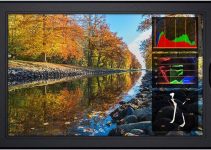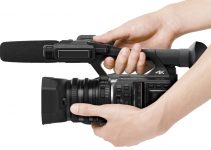It’s somehow peculiar how an amazing camera can be dropped down by a major company in the business and cause almost no reaction in the entire community. That’s, in fact, what happened a few months ago when Sigma released a beast of a camera, the Sigma fp which unfortunately did not resonate as expected.
On paper, this camera is an absolute winner. Touted as the world’s smallest and lightest full-frame camera, it shoots 12-bit 4K Raw using CinemaDNG to an external recorder. Oh yes, in case you’ve missed it, it’s full-frame. Inside the Sigma fp, you’ll find a few different video-shooting modes, and Rubidium from Crimson Engine will guide us through them in the video below.
As a still camera, the Sigma fp is shamefully an unimpressive one. It lacks a real shutter, and overall there is no wow factor in that small body. In short, the constraints are too many to overcome the positives. But that’s as a still camera, how about on the video side?
Let’s start with the top of the line: it records in Cinema DNG, a non-proprietary RAW codec that was developed by Adobe as an attempt to create a universal video raw format that used to be the codec of choice of Blackmagic Design in the past.
Almost all manufacturers abandoned the idea of an in-camera Raw, allegedly due to citation risk from RED (and indeed on the Sigma fp, Raw comes through external recording), but it’s still a valid format nonetheless.
The Sigma fp can shoot 12-bit, 10-bit, and 8-bit video. At first look these options may seem quite similar, at least between 12 and 10-bit there are almost imperceptible differences, but once you jump to 8-bit, you can notice immediately how the image quality starts to degrade quickly.
The real surprise, though, is not related to bit depth but has more to do with the frame size. When downscaling to 2K resolution, there some easily noticeable differences.
It seems that it’s much better to shoot 4K and downscale in post. It’s true that the tiny image processor inside the camera should be going at full throttle to achieve the best quality, but indeed it’s just better to shoot full-res and then go scaling down the image.
Moving to the compressed recording option, you have the ability to use H.264 compression in a .mov container which according to Rubidium is less than impressive, to say the least. The point is that this compressed 4:2:0 video comes with limited dynamic range and baked-in colors.
Besides aesthetics and color science, it’s kind of beyond the point to use this option for professional work. The 12-bit Raw recording at the maximum resolution seems to be the sweet spot on the Sigma fp. If you need to shoot compressed video, there are many more convenient cameras and more reputable brands to choose from.
Overall, the Sigma fp delivers excellent image quality along with some nice video features, plus it’s not even that expensive, especially when you consider it’s full-frame. But does that mean that you should jump on the Sigma bandwagon right away? Well, it depends.
If you have upcoming gigs where color quality and bit depth are of the utmost importance, sure, go for it. Other than that, if you are eager to try out and test before anyone else, please, serve yourself. In all other user cases, maybe you should wait and see what the second iteration of Sigma fp will offer.
[source: Crimson Engine]
B&H Order Link:
Sigma fp Mirrorless Digital Camera
Disclaimer: As an Amazon Associate partner and participant in B&H and Adorama Affiliate programmes, we earn a small comission from each purchase made through the affiliate links listed above at no additional cost to you.



